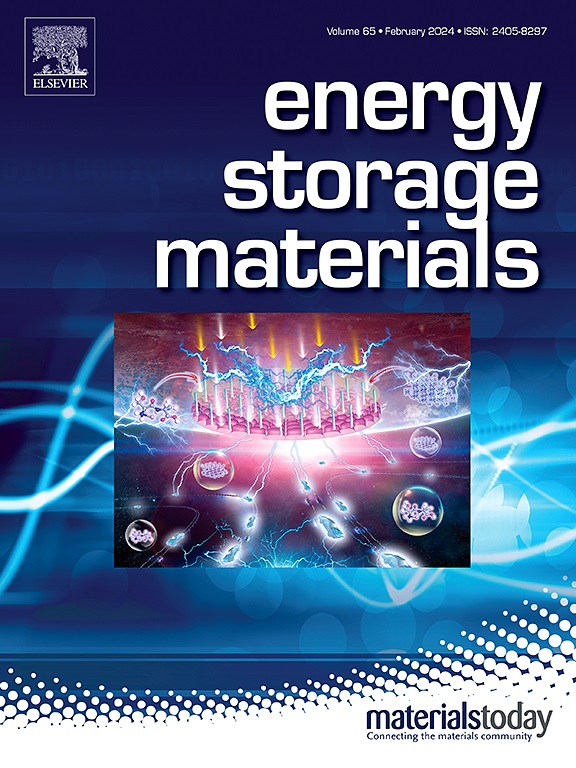Achieving superior high-temperature capacitance performance in aromatic polyetherimide with bulky fluorine substituent
IF 18.9
1区 材料科学
Q1 CHEMISTRY, PHYSICAL
引用次数: 0
Abstract
The rapid development of electronic and electrical power equipment has increased the demand for dielectric materials with high-temperature energy storage performances. However, the mutual restrictions imposed by the glass transition temperature (Tg) and bandgap (Eg) limit the use of commercial polyetherimide (PEI) under extreme conditions. In this work, we propose a strategic modular structure design to balance a high Tg and large Eg by modulating the substituents in the biphenyl structure of modified PEI. Both experimental results and theoretical simulations indicates that owing to its electron-withdrawing nature, a bulky -CF3 substituent not only increases the bandgap but also decreases the conjugation effect of the biphenyl structure, while having a minimal effect on Tg. This significantly shortens the hopping distance of the carriers, ultimately improving the high-temperature breakdown strength (Eb) and thus the capacitance performance of PEI. The modified PEI with the bulky -CF3 achieves a discharge energy density (Ue) of 8.01 J/cm3 with an efficiency (η) of 91.9 % at 150 °C and an Ue of 5.3 J/cm3 with an η of 90.4 % at 200 °C, which exceeds the performance of most of current high-temperature dielectric polymers. The results of this study provide technical support for the developing of high-performance, flexible dielectric capacitors.
在具有大体积氟取代基的芳香聚醚酰亚胺中获得优异的高温电容性能
电子和电力设备的快速发展,对具有高温储能性能的介电材料的需求增加。然而,玻璃化转变温度(Tg)和带隙(Eg)的相互限制限制了商用聚醚酰亚胺(PEI)在极端条件下的使用。在这项工作中,我们提出了一种战略性的模块化结构设计,通过调节联苯结构中的取代基来平衡高Tg和大Eg。实验结果和理论模拟均表明,体积较大的-CF3取代基由于其吸电子性质,不仅增加了带隙,而且降低了联苯结构的共轭效应,而对Tg的影响很小。这大大缩短了载流子的跳跃距离,最终提高了PEI的高温击穿强度(Eb),从而提高了PEI的电容性能。含-CF3的改性PEI在150℃时的放电能量密度(Ue)为8.01 J/cm3,效率(η)为91.9%;在200℃时的放电能量密度(Ue)为5.3 J/cm3, η为90.4%,超过了目前大多数高温介电聚合物的性能。研究结果为开发高性能柔性介质电容器提供了技术支持。
本文章由计算机程序翻译,如有差异,请以英文原文为准。
求助全文
约1分钟内获得全文
求助全文
来源期刊

Energy Storage Materials
Materials Science-General Materials Science
CiteScore
33.00
自引率
5.90%
发文量
652
审稿时长
27 days
期刊介绍:
Energy Storage Materials is a global interdisciplinary journal dedicated to sharing scientific and technological advancements in materials and devices for advanced energy storage and related energy conversion, such as in metal-O2 batteries. The journal features comprehensive research articles, including full papers and short communications, as well as authoritative feature articles and reviews by leading experts in the field.
Energy Storage Materials covers a wide range of topics, including the synthesis, fabrication, structure, properties, performance, and technological applications of energy storage materials. Additionally, the journal explores strategies, policies, and developments in the field of energy storage materials and devices for sustainable energy.
Published papers are selected based on their scientific and technological significance, their ability to provide valuable new knowledge, and their relevance to the international research community.
 求助内容:
求助内容: 应助结果提醒方式:
应助结果提醒方式:


